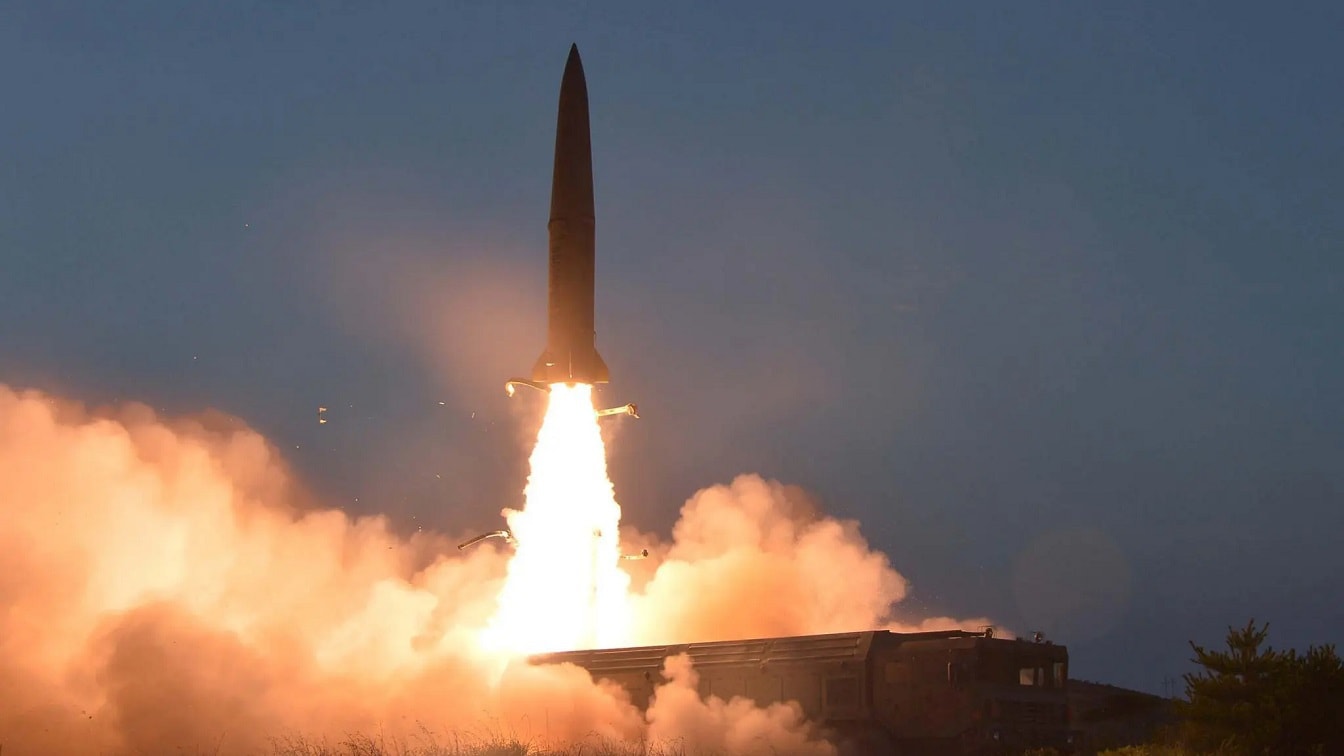US and South Korean intelligence now strongly suspect another nuclear weapons test by North Korea will occur soon. This would be North Korea’s seventh nuclear test; the first was in 2006. By now, Pyongyang probably has around fifty nuclear warheads (estimates do vary), plus missiles of various ranges on which to put them. That includes intercontinental ballistic missiles which can range the US homeland.
North Korea is building a full-spectrum nuclear and missile program. Its missiles can reach from local targets in northeast Asia all the way out to North America and Europe. It wishes to develop small, low-yield nuclear weapons which could be used on the battlefield. It is looking to build submarine-launched ballistic missiles; solid-fueled rockets which can be fueled and launched more rapidly; and multiple-warhead missiles so that even one missile breaking through missile defense can strike many targets.
A seventh nuclear test fits into this larger, long-running effort by North Korea to build out into a full-scale nuclear weapons state. Pyongyang is not satisfied with deterring the US with just a few ICBMs. It wants the full package, in part because it is conventionally very far behind the US, South Korea, and Japan. Nuclear weapons are a great way to equalize its very uneven security dilemma.
The Response of the US, South Korea, and Japan
The US and its regional allies, South Korea and Japan, have struggled with a response to all of this.
These partners maintain a formal commitment to the complete, verifiable, irreversible disarmament of North Korea, or the phrase CVID. While this would be a fantastic outcome if we could achieve it, it is highly unlikely. No one seriously believes that North Korea will cut its arsenal to zero. The value of these weapons to the regime security of Northern leader Kim Jong Un is so high, that no concessions could be big enough to achieve total disarmament. In negotiations, Kim has never even offered arsenal cuts.
Instead, the outside world has focused on limiting North Korean arsenal growth via sanctions. Since 2006, the United Nations has sanctioned North Korea nine times. Each of those Security Council resolutions were unanimous; China and Russia to worry about just how large Pyongyang’s arsenal might become. Since 2016, the sanctions have widened to blockade whole sectors of the Northern economy. At this point, almost any substantial trade with North Korea of complex components is sanctioned.
While the sanctions have not forced North Korea to give up its weapons, they probably have slowed its march toward missiles and warheads. The North has likely undershot projections of where it otherwise might be without sanctions.
Finally, the US, Japan, and South Korea have looked to defense. North Korea would deliver a nuclear weapon on a missile, so all three countries increasingly focus on missile defense. Unfortunately, missile defense does not work very well, but there is little alternative.
What to Look for in a Next Test
Should the North test again soon, the key questions will be sheer size of the blast, and whether Pyongyang can step up from its current, primitive fission warheads to more powerful fusion weapons (a hydrogen bomb). The ability of North Korea to detonate a functional nuclear device is now accepted. Further tests will likely focus on quantitative development – building bigger and bigger weapons.
The yield – the amount of energy released – is the big question. The North, presumably, wants to build the genuinely enormous weapons that US and Soviet Union developed during the Cold War. Fusion weapons can release energy by the megaton. Such weapons are city-breaking devices and could be used to hold millions of people hostage in large cities like Tokyo or Seoul.
So What do We Do?
The US has promised a ‘swift, forceful’ response to another test. But it is not clear what options the US and its partners have which have not already been tried. Further sanctions might help at the margins, but North Korea is already pretty heavily sanctioned, and US relations with Russia and China have plunged. They would almost certainly veto any new UN sanctions.
All other options have escalation risks, but it is possible that patience with North Korea is running out. There are more aggressive options.
South Korea’s new president has flirted with missile strikes on North Korean launch sites. That is hugely risky. Less risky might a blockade of North Korean shipping, but there are obvious escalation risks here too in stopping and boarding ships. The allies might try shooting down a North Korean missile test. This idea has floated around for a decade, but there is anxiety that missile defense might not work and miss the target.
Finally, there is the option I think is most likely – the gradual drift toward indigenous nuclear weapons for Japan and South Korea, to directly deter the North without US help. This is risky too, but there is polling in South Korea suggesting growing support for this option.
Because North Korea will not stop, ever more risky options are being tabled. This will not end well.
Dr. Robert E. Kelly (@Robert_E_Kelly; website) is a professor of international relations in the Department of Political Science at Pusan National University. Dr. Kelly is now a 1945 Contributing Editor as well.

